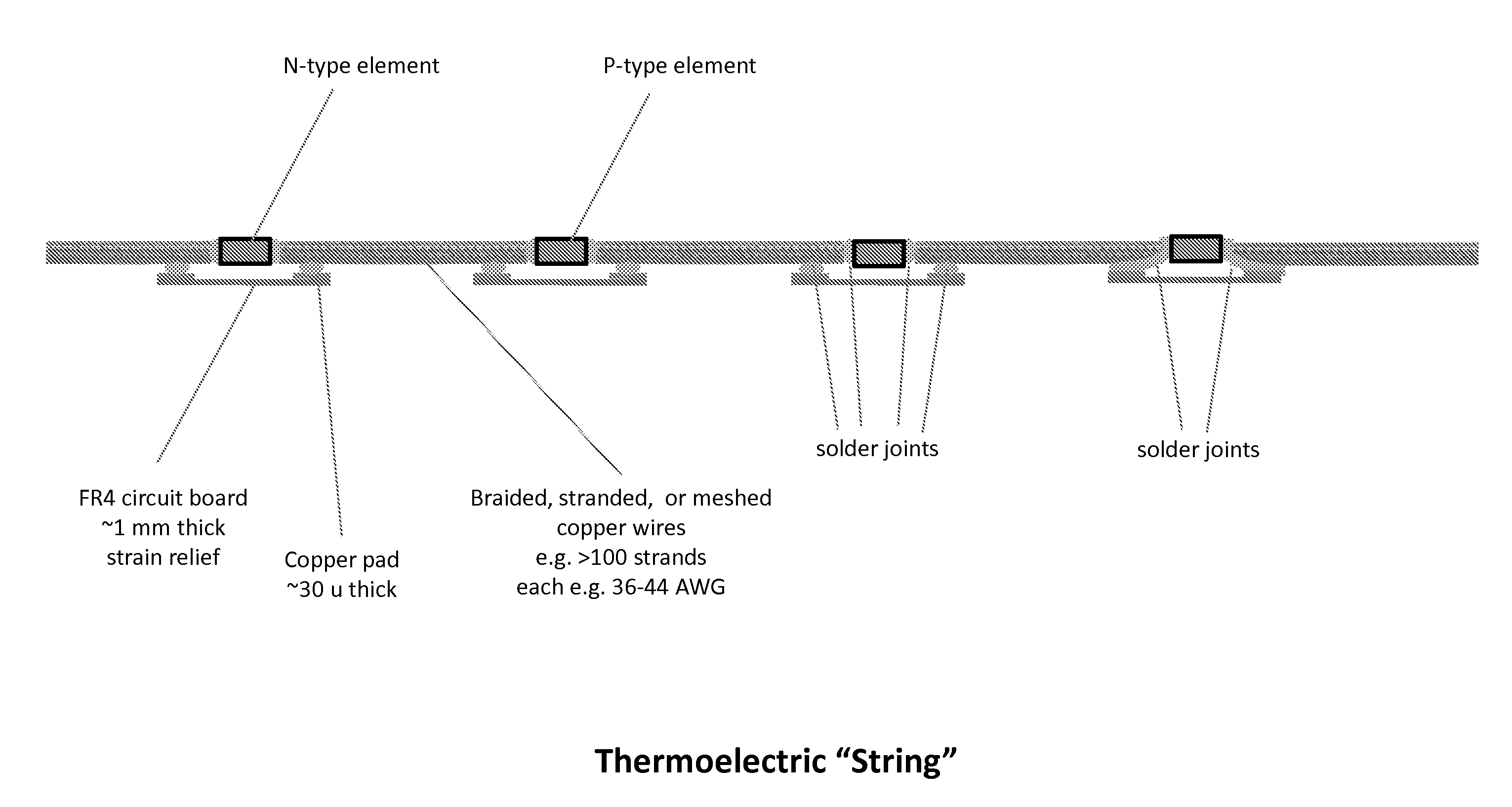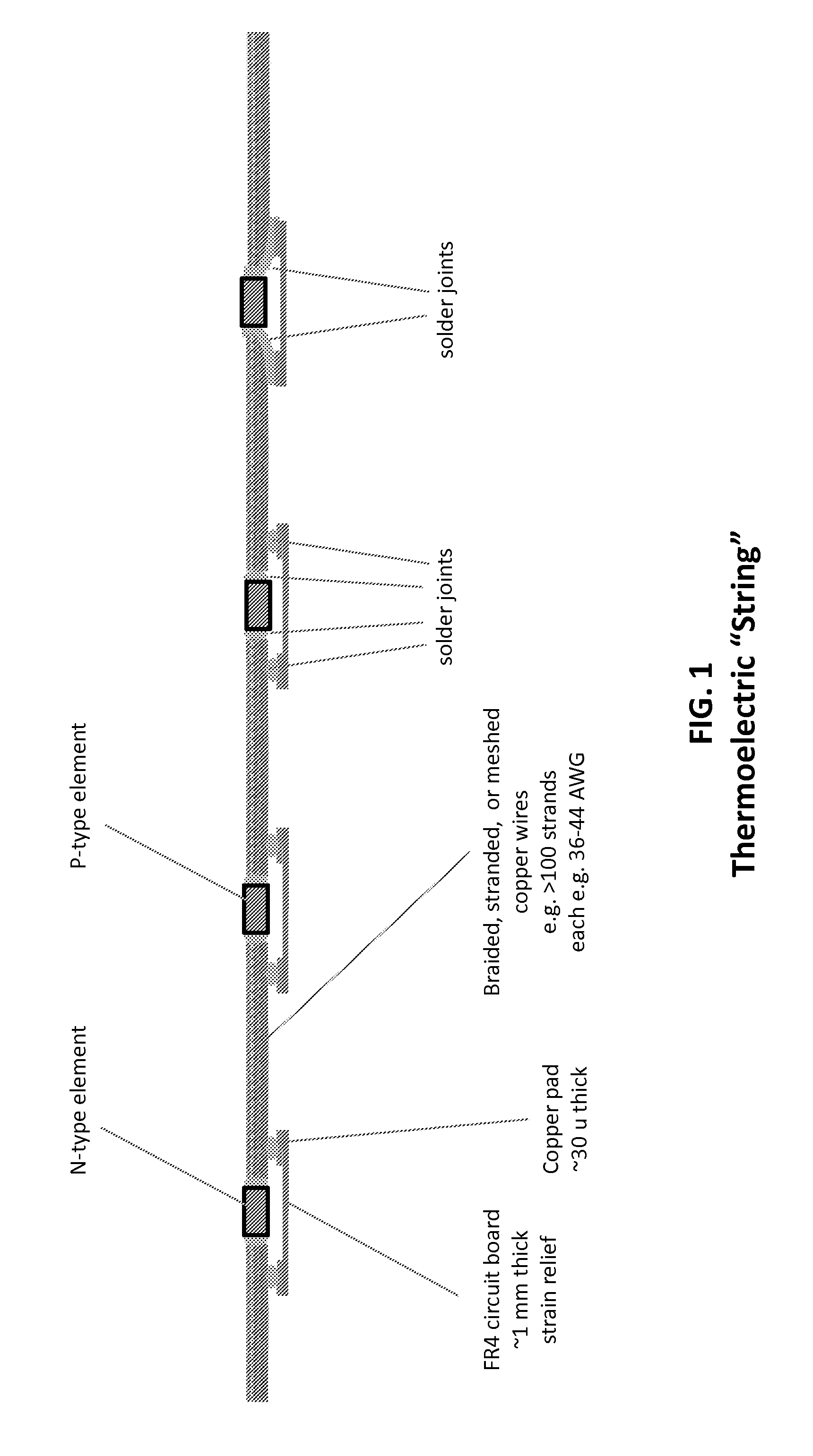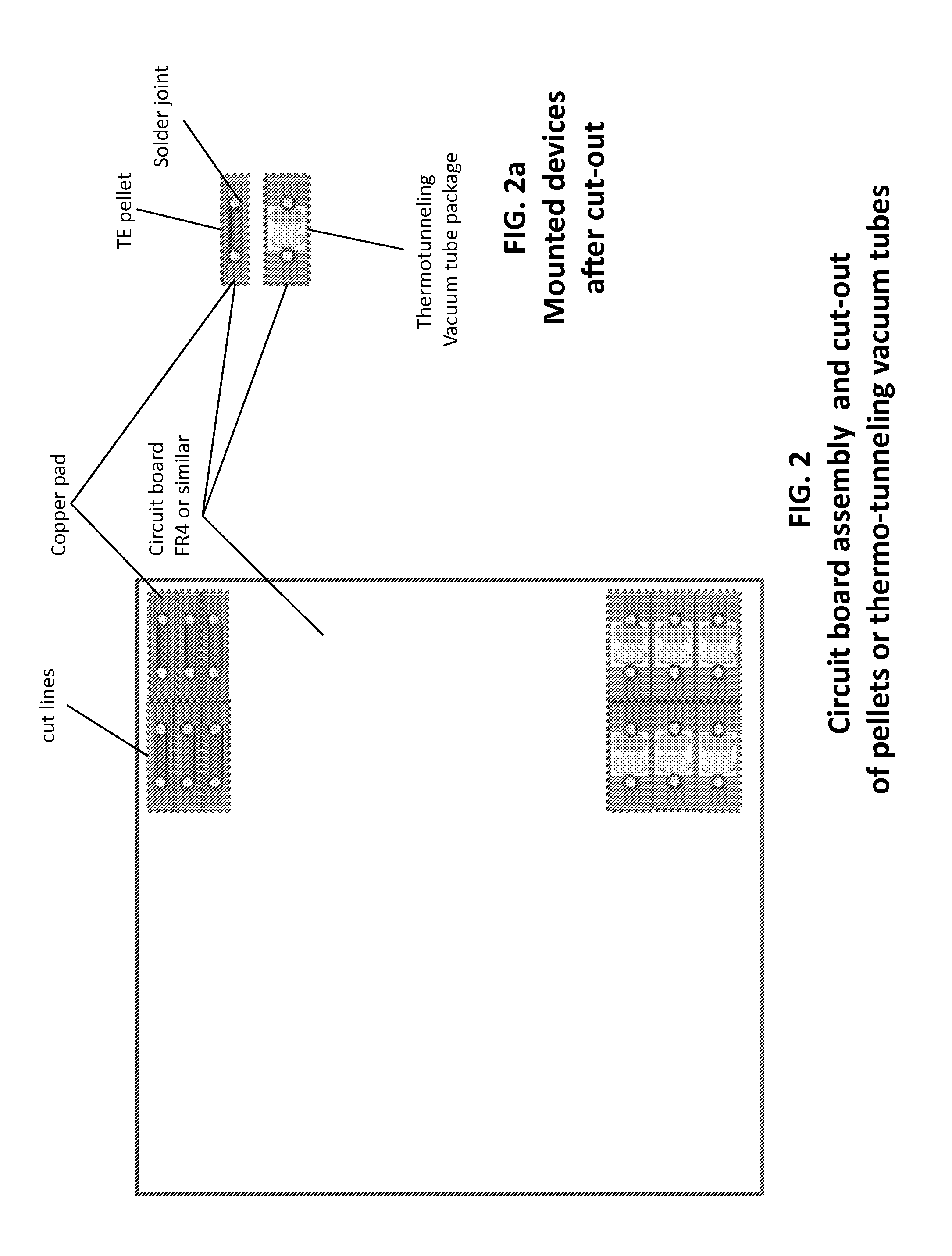Distributed thermoelectric string and insulating panel
- Summary
- Abstract
- Description
- Claims
- Application Information
AI Technical Summary
Benefits of technology
Problems solved by technology
Method used
Image
Examples
example 1
A Thermoelectric Cooler using Invention
[0044]FIG. 7a illustrates a thermoelectric cooler 701 using the invention. Four thermoelectric panels 505 were built using a string as shown in FIG. 1 with braid 101 lengths 7 and 11 cm for the cold and hot sides, respectively. The panels were 1-inch (2.54 cm) thick Styrofoam™ 301 with 3 mm diameter holes and a pellet spacing of 3 cm. A total of 256 pellets were inserted into the four populated panels. The four thermoelectric panels were combined with two plain Styrofoam™ panels to construct a small cooler. The invention cooler 701 in FIG. 7a did not contain a heat sink or a fan and was powered with 20 watts of electricity.
[0045]The invention prototype of FIG. 7a was compared with a prior art commercial cooler 702 that contains a prior art thermoelectric module 704 also with 256 pellets, a prior art heat sink 706, and a prior art fan 705. This commercial cooler was powered as designed with 40 watts of electricity.
[0046]FIG. 7d shows the data ta...
example 2
Solar Power Storage and Electricity Generation
[0060]An example power generator in accordance with FIG. 9 will now be described that is competitive with other power generators such as wind turbines and photovoltaic panels. The heat storage medium 905 is 2 m×2 m×0.3 m and is assumed to reach a peak of 100° C. This temperature does not exceed the boiling point of water, and is a temperature easily reached by insulated solar ovens used to cook food. The cold side 901 temperature is assumed to be room temperature or 20° C. The delta temperature ΔT across the thermoelectric panel 902 is then 80° C. and the average temperature is 60° C. The heat storage medium at a temperature elevated by 80° C. relative to ambient stores 4.0 E+8 joules or 112 Kwatt-hours if the heat capacity of water at 4.2 joules / cm3° C. is assumed.
[0061]The insulating material 903 dimensions are 2 m×2 m×0.05 m, and so the thermal loss through the thickness of the insulator at the ΔT of 80° C. is 147 watts if a typical t...
PUM
| Property | Measurement | Unit |
|---|---|---|
| Thickness | aaaaa | aaaaa |
| Temperature | aaaaa | aaaaa |
| Diameter | aaaaa | aaaaa |
Abstract
Description
Claims
Application Information
 Login to View More
Login to View More - R&D
- Intellectual Property
- Life Sciences
- Materials
- Tech Scout
- Unparalleled Data Quality
- Higher Quality Content
- 60% Fewer Hallucinations
Browse by: Latest US Patents, China's latest patents, Technical Efficacy Thesaurus, Application Domain, Technology Topic, Popular Technical Reports.
© 2025 PatSnap. All rights reserved.Legal|Privacy policy|Modern Slavery Act Transparency Statement|Sitemap|About US| Contact US: help@patsnap.com



